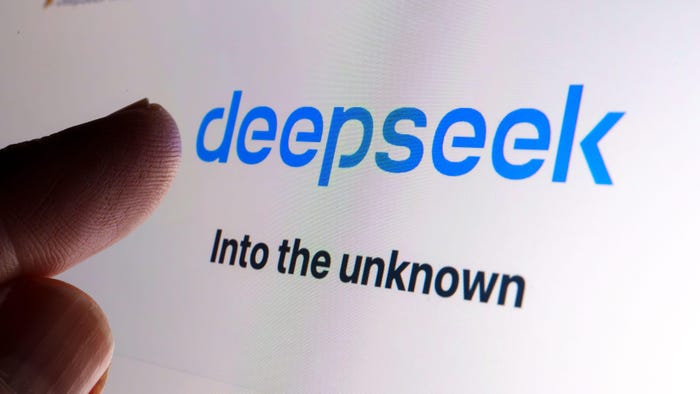Salt Typhoon's Impact on the US & BeyondSalt Typhoon's Impact on the US & Beyond
Salt Typhoon underscores the urgent need for organizations to rapidly adopt modern security practices to meet evolving threats.
_vska_Alamy_.jpg?width=1280&auto=webp&quality=95&format=jpg&disable=upscale)
COMMENTARY
The Chinese-linked hacking group Salt Typhoon recently was detected lurking in major US telecommunication systems, exposing nearly every American's communications to Chinese intelligence and security services.
In response, on Dec. 4, 2024, the Cybersecurity and Infrastructure Security Agency (CISA) and the FBI issued a joint statement recommending that American citizens and companies adopt end-to-end encrypted communication tools to avoid exposing sensitive information to China. While this advice is prudent to secure communications, hasty adoption of these technologies could result in regulatory noncompliance for organizations in highly regulated industries. These organizations should carefully examine both their security risk and regulatory obligations as they adopt new security solutions.
Background: Salt Typhoon
Salt Typhoon exploited legacy systems throughout the telecommunications industry that were too old to implement modern cybersecurity practices, with some parts dating back to the late 1970s. Commonly accepted baseline cyber protections like multifactor authentication were not implemented. While the scope of this attack is widespread, including voice calls and SMS messages, US intelligence officials noted that communications within encrypted communication applications such as Apple's iMessage, Meta's WhatsApp, and Signal were not exposed.
Salt Typhoon marks one of the most sophisticated attacks on US critical infrastructure in history. US officials have concluded that every major telecommunications provider has been implicated. China remains the most active and persistent cyber threat to the United States, and the Salt Typhoon campaign marks one of the most sophisticated attacks on US critical infrastructure in history.
Security vs. Compliance: Adopting End-to-End Encryption Technologies
US cybersecurity and intelligence officials advised companies and individuals to adopt end-to-end encrypted applications for communications where only the sender and the intended recipients can access the content of the communication. End-to-end encryption works by securing the content of communications using cryptographic keys at both the sender and recipient. The end result is data in transit is secure, rendering the contents of any intercepted or compromised communications indecipherable without the cryptographic key, including by Internet service providers and telecommunications companies — and foreign hackers targeting those entities.
While end-to-end encrypted applications provide obvious advantages for security, many are not designed to comply with the data retention and access requirements imposed upon certain highly regulated industries.
In the financial services sector, Securities and Exchange Commission (SEC) Rule 17a-4(b)(4) requires that communications received and sent by a member, broker, or dealer that relate to the business of an organization are to be retained for at least three years. Additionally, Section 802 of the Sarbanes-Oxley Act requires accountants who audit or review financial statements to retain records, which include any communications relevant to the audit or review.
In the healthcare sector, Section 164.312(e) of the Health Insurance Portability and Accessibility Act (HIPAA) requires that covered entities implement technical safeguards to prevent unauthorized access to electronic protected health information (ePHI) that is being transmitted over an electronic communications network. Many encrypted communications applications restrict a covered entity's ability to monitor for or audit unauthorized disclosure of ePHI. Additionally, Section 164.350(j) of HIPAA requires that covered entities retain documentation of any communications containing ePHI for at least six years.
Recommendations
As Salt Typhoon has revealed, unsecured communications of executives and employees across every sector may be targeted by Chinese intelligence services for exploitation. In this new environment, balancing communications security with compliance can be challenging. To appropriately navigate these risks, organizations in every sector should consider three things.
First, organizations should implement end-to-end encryption for all business communications internally and, to the greatest extent practicable, externally. There are numerous mobile and desktop applications currently available that are designed to serve this purpose. For companies in regulated industries, it is important to also consider regulatory retention, monitoring, and auditing requirements when considering these tools. Such organizations should seek to implement solutions that can ensure appropriate encryption standards for messaging, collaboration, and voice and video calls specifically configured to allow for auditing and data preservation.
Second, organizations should implement policies and procedures to guide the use of encrypted communications. For example, many encrypted communication applications allow users to individually establish time-based purge rules for messages. While valuable for information security, this could render an organization non-compliant with data retention and audit requirements. Where possible, such functions should be disabled for individuals and archiving tools should be in place. Additionally, employees should receive regular training on communications security and regulatory compliance.
Third, a key lesson from Salt Typhoon is that baseline cybersecurity measures still provide meaningful defenses against malicious parties. Cybersecurity measures such as multifactor authentication, use of password managers, encrypting data at rest and in motion, and ensuring that all software and hardware are modern and equipped with the latest updates will give organizations a much stronger cybersecurity posture.
Conclusion
Salt Typhoon underscores the urgent need for organizations to rapidly adopt modern security practices to meet evolving threats. However, in doing so, organizations need to balance the security imperatives with their regulatory obligations.
About the Authors
You May Also Like
Uncovering Threats to Your Mainframe & How to Keep Host Access Secure
Feb 13, 2025Securing the Remote Workforce
Feb 20, 2025Emerging Technologies and Their Impact on CISO Strategies
Feb 25, 2025How CISOs Navigate the Regulatory and Compliance Maze
Feb 26, 2025Where Does Outsourcing Make Sense for Your Organization?
Feb 27, 2025





_Brain_light_Alamy.jpg?width=700&auto=webp&quality=80&disable=upscale)

